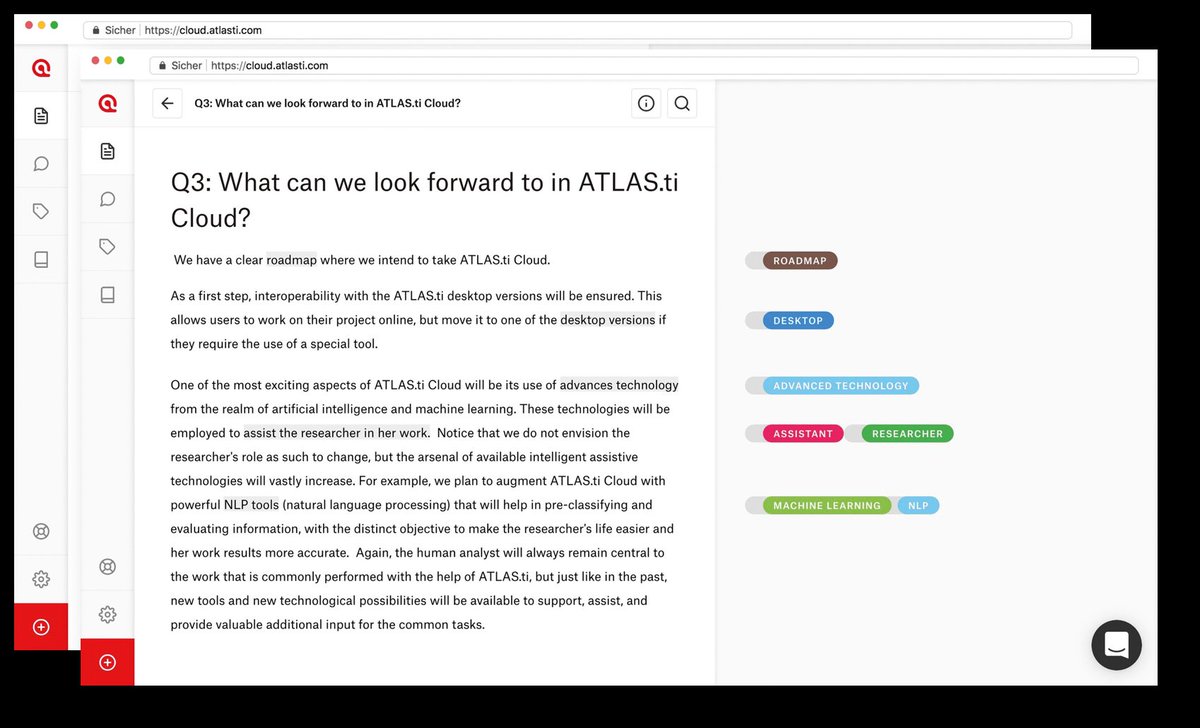

As Fossey puts it : “sampling, data collection, analysis and interpretation are related to each other in a cyclical (iterative) manner, rather than following one after another in a stepwise approach”. Given that qualitative research is characterised by flexibility, openness and responsivity to context, the steps of data collection and analysis are not as separate and consecutive as they tend to be in quantitative research.

For example, while quantitative trials can measure the costs and benefits of neuro-oncological treatment in terms of survival rates or adverse effects, qualitative research can help provide a better understanding of patient or caregiver stress, visibility of illness or out-of-pocket expenses. Using qualitative methods can also help shed light on the “softer” side of medical treatment. Research problems that can be approached particularly well using qualitative methods include assessing complex multi-component interventions or systems (of change), addressing questions beyond “what works”, towards “what works for whom when, how and why”, and focussing on intervention improvement rather than accreditation.

#Atlasti cloud vs atlas.ti 7 how to
Instead of limiting oneself to RCTs, Berwick recommends embracing a wider range of methods, including qualitative ones, which for "these specific applications, (.) are not compromises in learning how to improve they are superior". Critics who use it as a truth standard in this context are incorrect". According to him, " such complex terrain, the RCT is an impoverished way to learn. Arguing in JAMA, Berwick uses the example of rapid response teams in hospitals, which he describes as " a complex, multicomponent intervention – essentially a process of social change" susceptible to a range of different context factors including leadership or organisation history. This means that even when an RCT is possible, some research problems require a different design that is better suited to addressing them. Others, however, argue that an objective hierarchy does not exist, and that, instead, the research design and methods should be chosen to fit the specific research question at hand – "questions before methods". This focus on quantitative research and specifically randomised controlled trials (RCT) is visible in the idea of a hierarchy of research evidence which assumes that some research designs are objectively better than others, and that choosing a "lesser" design is only acceptable when the better ones are not practically or ethically feasible.
#Atlasti cloud vs atlas.ti 7 trial
The latter field is more traditionally rooted in the evidence-based-medicine paradigm, as seen in " research that involves testing the effectiveness of various strategies to achieve changes in clinical practice, preferably applying randomised controlled trial study designs (.)". While qualitative research is common in other fields, it is still relatively underrepresented in health services research. To discover reasons for observed patterns, especially the invisible or surprising ones, qualitative designs are needed. A quantitative study could have measured the number of patients over time or even looked at possible explanatory factors – but only those previously known or suspected to be of relevance. Using qualitative interviews with patients and staff, it found one of the most significant access barriers to be transportation problems, including some towns and communities simply not having a bus service to the hospital. For example, one Australian study addressed the issue of why patients from Aboriginal communities often present late or not at all to specialist services offered by tertiary care hospitals. Using qualitative in addition to quantitative designs will equip us with better tools to address a greater range of research problems, and to fill in blind spots in current neurological research and practice.īecause some research questions cannot be answered using (only) quantitative methods. Criteria such as checklists, reflexivity, sampling strategies, piloting, co-coding, member-checking and stakeholder involvement can be used to enhance and assess the quality of the research conducted. For data analysis, field-notes and audio-recordings are transcribed into protocols and transcripts, and coded using qualitative data management software.

The most common methods of data collection are document study, (non-) participant observations, semi-structured interviews and focus groups. Qualitative research can be defined as the study of the nature of phenomena and is especially appropriate for answering questions of why something is (not) observed, assessing complex multi-component interventions, and focussing on intervention improvement. This paper aims to provide an overview of the use and assessment of qualitative research methods in the health sciences.


 0 kommentar(er)
0 kommentar(er)
